What Do Fish Eat?
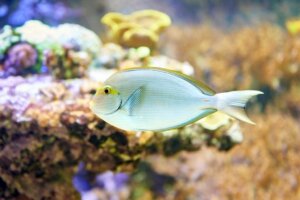

Written and verified by the biologist Samuel Sanchez
Fish are fascinating living beings from an evolutionary point of view, as they have colonized one of the most inhospitable environments on Earth: the aquatic ecosystem. Whether freshwater or saltwater, these vertebrates have adaptations unthinkable in a terrestrial living being. Have you ever wondered what fish eat?
These vertebrates can adopt multiple dietary choices ranging from parasitism to filtration. If you want to know the most fascinating examples of each feeding adaptation, read on.
What are fish?
Before describing what fish eat, we find it interesting to explore them from a taxonomic point of view. First of all, it is necessary to point out that these animals belong to the subphylum Vertebrata and that they form a paraphyletic group. This means that the taxon encompasses all fishes and their ancestors, but other related living beings are left out so as not to complicate the terminology.
All fishes are apodous (lacking limbs), have some kind of skeleton (bony or cartilaginous), and breathe through the use of gills, although the most basal ones may not comply with this last rule. Approximately 99 % of the described species are actinopterygians, of which 95 % belong to the infraclass Teleostei.
This means that almost all extant fishes are teleosteans or “typical” from a morphological point of view. They have a bony skeleton, a body covered with scales, a swim bladder to modulate their location in the water column, and a fusiform body to facilitate the act of swimming.
Although most fishes are teleosts, there are also cartilaginous fishes, such as rays and sharks.
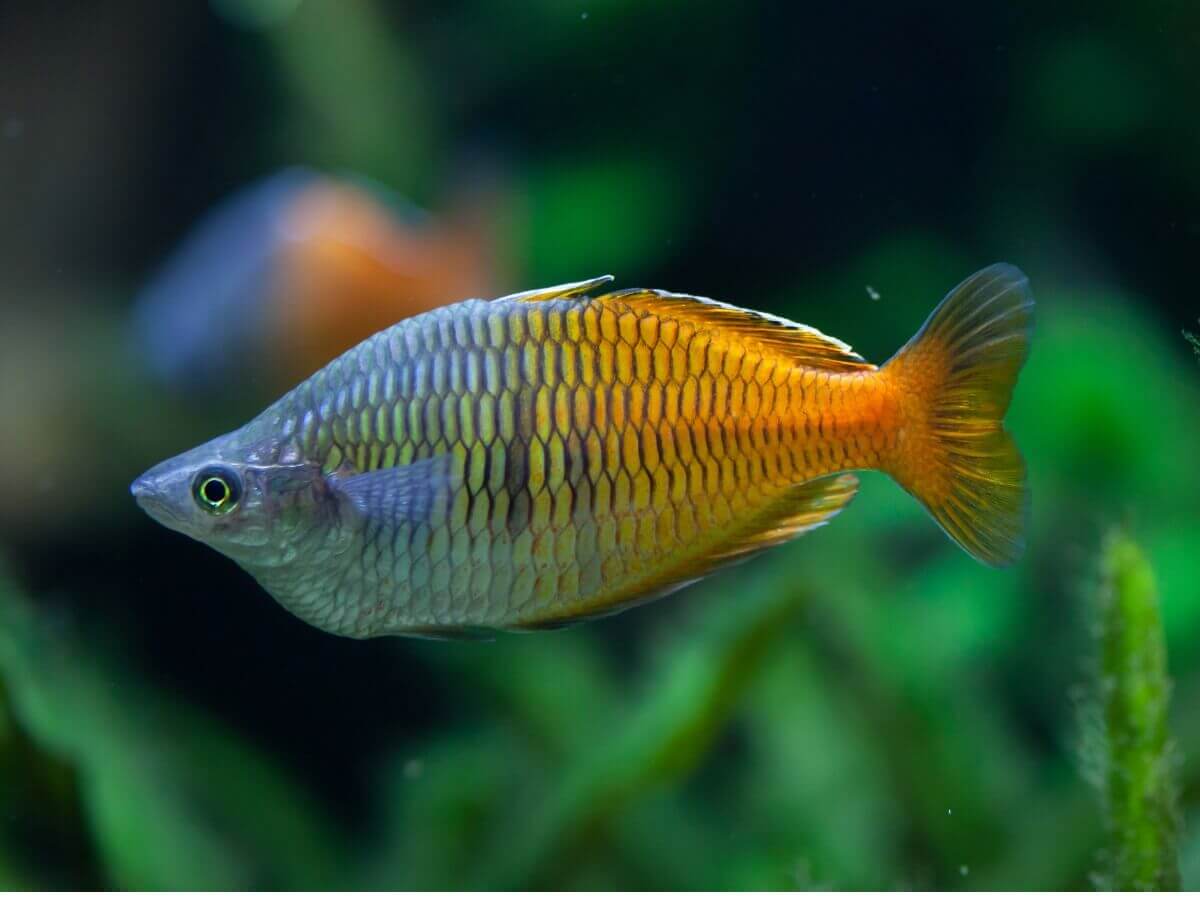
What do fish eat?
Now that we’ve introduced you to the group properly, we’re ready to explore what fish eat in the different environments they inhabit and according to their life strategies. Be sure to read on!
Carnivorous fish
Carnivorous fish are those that feed only on live or freshly killed animals. The clearest examples of this life strategy are found among the Lamniformes, as sharks are the predators of the sea par excellence.
The most well-known representative of the carnivorous fish is the white shark(Carcharodon carcharias). These giants of 5 to 6.4 meters in length dominate the continental shelf areas near the coasts, where the water is shallower. Their diet is based on large aquatic mammals, such as sea lions and seals. Great white sharks are lethal and unstoppable predators.

Herbivorous fish
As their name suggests, herbivorous fish are those that feed exclusively on plant matter. They are very important in maintaining stable ecosystems, as they consume primary producers (plants) and generate organic matter for carnivores and omnivores to feed on.
It is difficult to find a strictly herbivorous fish species, as even the well-known pacus sometimes prey on small crustaceans. However, the species Piaractus brachypomus is a very good example, since the basis of its diet is the fruits that fall from the trees on the banks of the Amazon River.
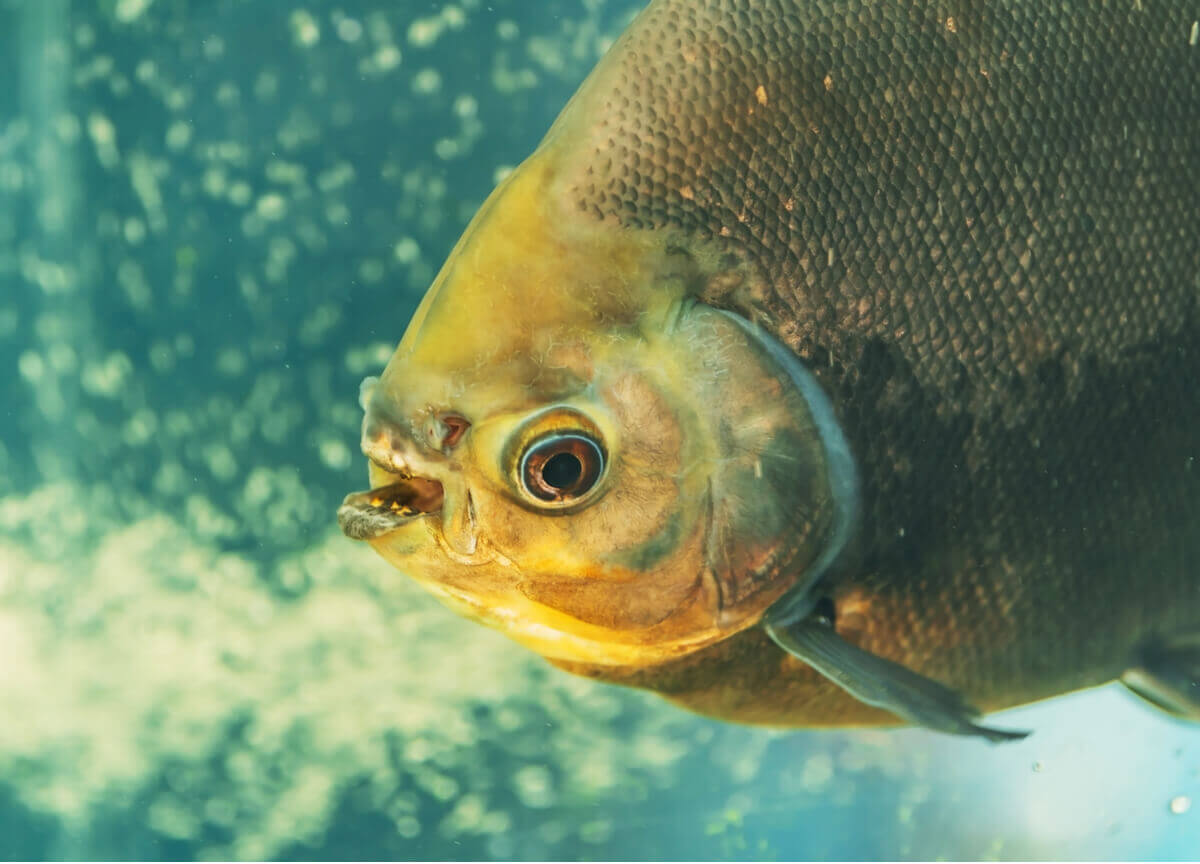
Omnivorous fish
Without a doubt, the general answer to what fish eat is “everything”. Most species in this group (especially freshwater species) are omnivorous, meaning they accept plants, small prey, and decaying organic matter of all kinds.
One of the clearest examples on this front is the goldfish(Carassius auratus). Having a tough digestive system, this animal is able to feed on insect larvae, adult invertebrates, decaying organic matter, plant shoots, and many plant products (such as chard, peas, cucumber, and more).

Detritivorous fish
Detritivorous fish feed on decaying organic matter present in the sediment or substrate. They usually have a small-sized subterminal mouth directed “downwards”, as all their food is found between the stones and sand. They eat small particles that have been deposited, dead animals from the bottom, and even feces from other species.
A clear example in this group is the genus Corydoras. These siluriform fish have a specialized mouth and barbs that help them detect organic matter among the stones. They are part of the biological cleaning apparatus of many freshwater aquariums.
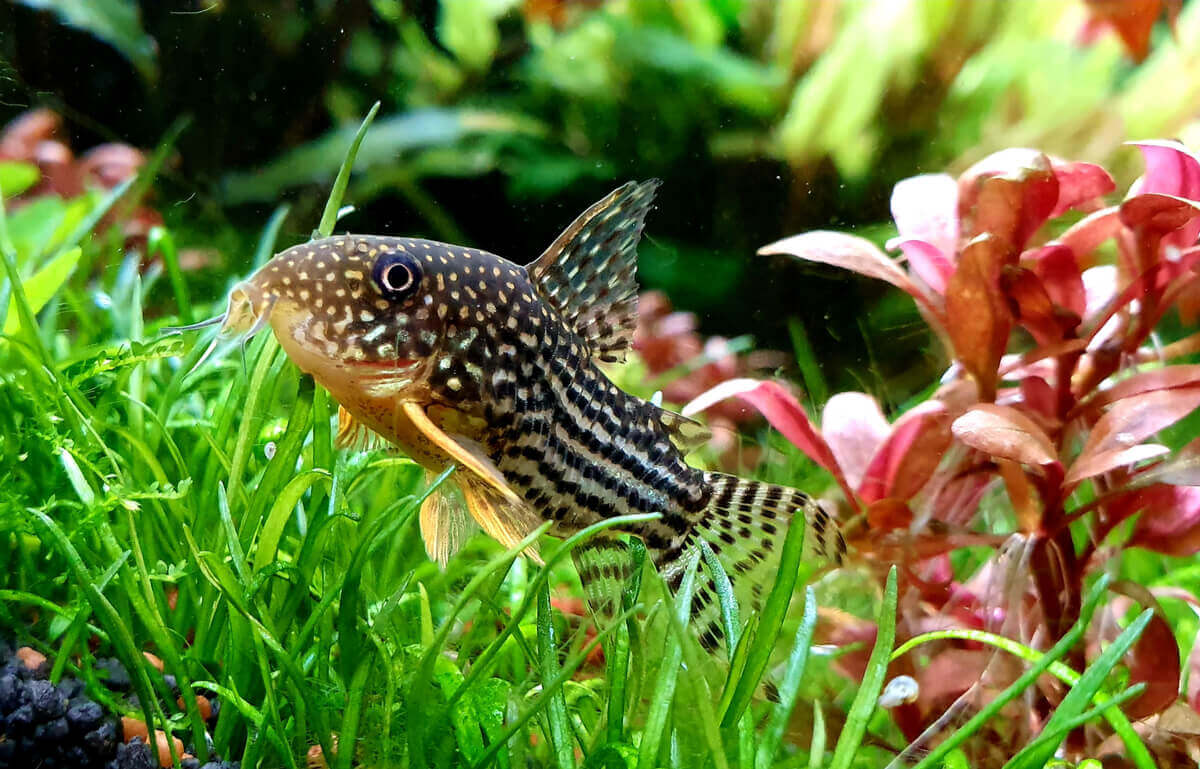
Parasitic fish
Parasitic fish use a host to obtain all the food they need from it. To do this, they attach themselves to some part of the host’s body and begin to suck its blood or scrape its tissues. They must reach an equilibrium, as they cannot kill their victim immediately if they want to continue to feed on its reserves for a limited time.
The clearest example of this group is the river lamprey (Lampetra fluviatilis). With scraping, suction cup-like mouthparts, the adult specimen of this species chooses the most irrigated areas of large fish and attaches itself to them. As unpleasant as it sounds, it scrapes the muscle tissue of its host and feeds on its flesh and blood.
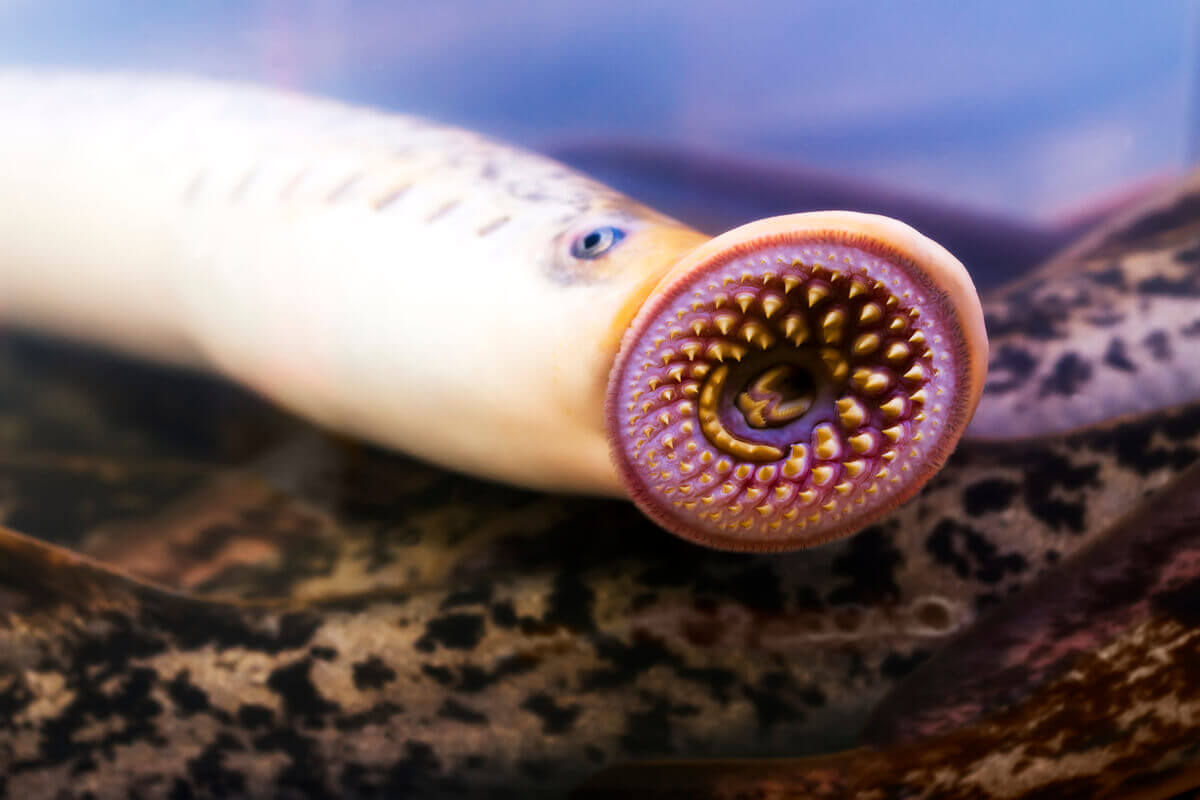
Filter-feeding fish
Filter-feeding fish are those that feed on matter that’s suspended in the water column. They require a very specialized mouth apparatus to do this, as they must allow a constant flow of water to enter their mouths while trapping enough microparticles to nourish themselves.
The perfect example in this group is the whale shark (Rhincodon typus). It keeps its huge mouth open, pumps water through its gills, and obtains the particles that nourish it: Phytoplankton, nekton, macroalgae, and krill. Sometimes, they can also eat crustaceans and schools of small fish, but these aren’t the most common sources of food.

Coral-eating fish
What do these fish with such a strange name eat? The answer is simple: Corallivorous fish eat coral, i.e. sessile colonial animals belonging to the phylum Cnidaria. Parrotfish are a great exponent in this field, especially the species Bolbometopon muricatum.
Corallivorous fishes break up the mineral matter present in the rocks by eating the corals. This work is extremely important, as it generates substrate.
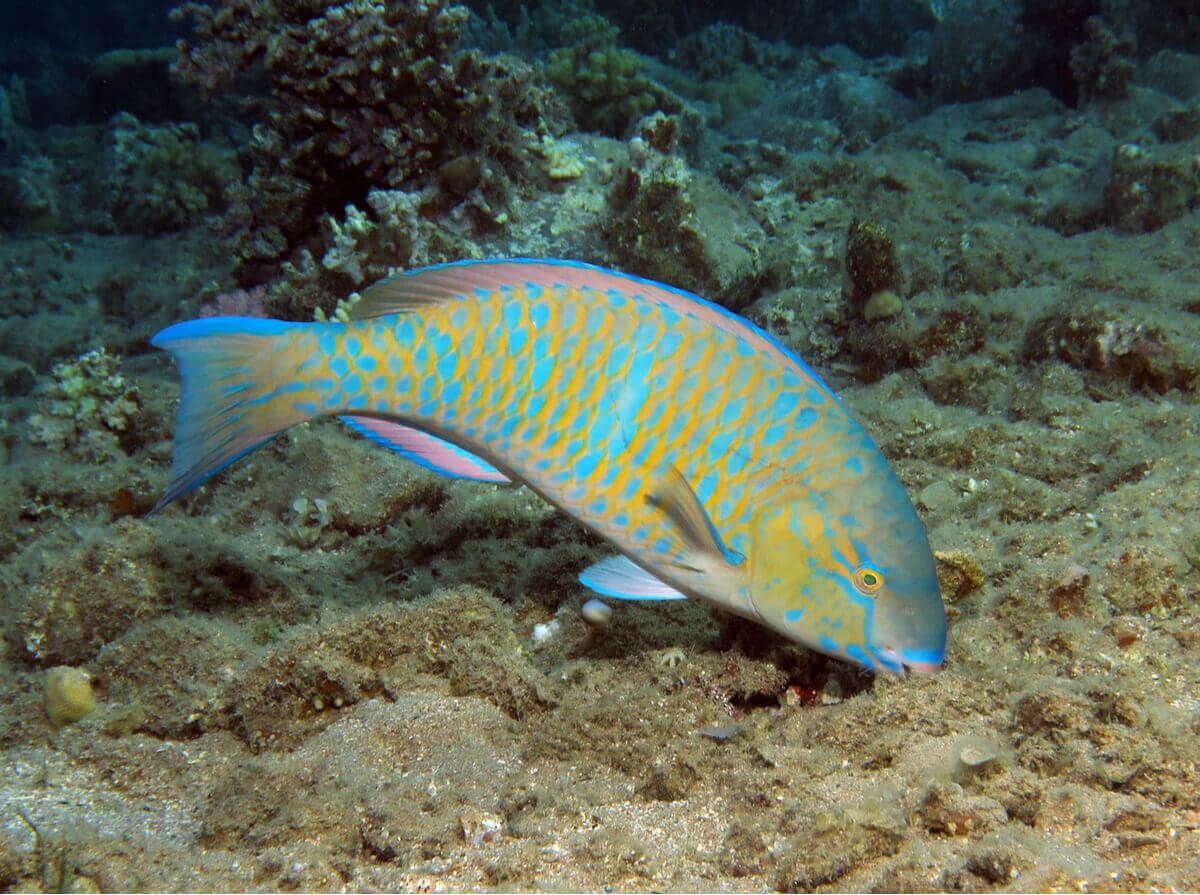
As you can see, the answer to the question of what fish eat is much more difficult to explain than it might at first appear. These animals are incredibly varied and, therefore, their diet also changes drastically between taxa. However, it’s easy to recognize that most members of this taxon are omnivores.
Fish are fascinating living beings from an evolutionary point of view, as they have colonized one of the most inhospitable environments on Earth: the aquatic ecosystem. Whether freshwater or saltwater, these vertebrates have adaptations unthinkable in a terrestrial living being. Have you ever wondered what fish eat?
These vertebrates can adopt multiple dietary choices ranging from parasitism to filtration. If you want to know the most fascinating examples of each feeding adaptation, read on.
What are fish?
Before describing what fish eat, we find it interesting to explore them from a taxonomic point of view. First of all, it is necessary to point out that these animals belong to the subphylum Vertebrata and that they form a paraphyletic group. This means that the taxon encompasses all fishes and their ancestors, but other related living beings are left out so as not to complicate the terminology.
All fishes are apodous (lacking limbs), have some kind of skeleton (bony or cartilaginous), and breathe through the use of gills, although the most basal ones may not comply with this last rule. Approximately 99 % of the described species are actinopterygians, of which 95 % belong to the infraclass Teleostei.
This means that almost all extant fishes are teleosteans or “typical” from a morphological point of view. They have a bony skeleton, a body covered with scales, a swim bladder to modulate their location in the water column, and a fusiform body to facilitate the act of swimming.
Although most fishes are teleosts, there are also cartilaginous fishes, such as rays and sharks.

What do fish eat?
Now that we’ve introduced you to the group properly, we’re ready to explore what fish eat in the different environments they inhabit and according to their life strategies. Be sure to read on!
Carnivorous fish
Carnivorous fish are those that feed only on live or freshly killed animals. The clearest examples of this life strategy are found among the Lamniformes, as sharks are the predators of the sea par excellence.
The most well-known representative of the carnivorous fish is the white shark(Carcharodon carcharias). These giants of 5 to 6.4 meters in length dominate the continental shelf areas near the coasts, where the water is shallower. Their diet is based on large aquatic mammals, such as sea lions and seals. Great white sharks are lethal and unstoppable predators.

Herbivorous fish
As their name suggests, herbivorous fish are those that feed exclusively on plant matter. They are very important in maintaining stable ecosystems, as they consume primary producers (plants) and generate organic matter for carnivores and omnivores to feed on.
It is difficult to find a strictly herbivorous fish species, as even the well-known pacus sometimes prey on small crustaceans. However, the species Piaractus brachypomus is a very good example, since the basis of its diet is the fruits that fall from the trees on the banks of the Amazon River.

Omnivorous fish
Without a doubt, the general answer to what fish eat is “everything”. Most species in this group (especially freshwater species) are omnivorous, meaning they accept plants, small prey, and decaying organic matter of all kinds.
One of the clearest examples on this front is the goldfish(Carassius auratus). Having a tough digestive system, this animal is able to feed on insect larvae, adult invertebrates, decaying organic matter, plant shoots, and many plant products (such as chard, peas, cucumber, and more).

Detritivorous fish
Detritivorous fish feed on decaying organic matter present in the sediment or substrate. They usually have a small-sized subterminal mouth directed “downwards”, as all their food is found between the stones and sand. They eat small particles that have been deposited, dead animals from the bottom, and even feces from other species.
A clear example in this group is the genus Corydoras. These siluriform fish have a specialized mouth and barbs that help them detect organic matter among the stones. They are part of the biological cleaning apparatus of many freshwater aquariums.

Parasitic fish
Parasitic fish use a host to obtain all the food they need from it. To do this, they attach themselves to some part of the host’s body and begin to suck its blood or scrape its tissues. They must reach an equilibrium, as they cannot kill their victim immediately if they want to continue to feed on its reserves for a limited time.
The clearest example of this group is the river lamprey (Lampetra fluviatilis). With scraping, suction cup-like mouthparts, the adult specimen of this species chooses the most irrigated areas of large fish and attaches itself to them. As unpleasant as it sounds, it scrapes the muscle tissue of its host and feeds on its flesh and blood.

Filter-feeding fish
Filter-feeding fish are those that feed on matter that’s suspended in the water column. They require a very specialized mouth apparatus to do this, as they must allow a constant flow of water to enter their mouths while trapping enough microparticles to nourish themselves.
The perfect example in this group is the whale shark (Rhincodon typus). It keeps its huge mouth open, pumps water through its gills, and obtains the particles that nourish it: Phytoplankton, nekton, macroalgae, and krill. Sometimes, they can also eat crustaceans and schools of small fish, but these aren’t the most common sources of food.

Coral-eating fish
What do these fish with such a strange name eat? The answer is simple: Corallivorous fish eat coral, i.e. sessile colonial animals belonging to the phylum Cnidaria. Parrotfish are a great exponent in this field, especially the species Bolbometopon muricatum.
Corallivorous fishes break up the mineral matter present in the rocks by eating the corals. This work is extremely important, as it generates substrate.

As you can see, the answer to the question of what fish eat is much more difficult to explain than it might at first appear. These animals are incredibly varied and, therefore, their diet also changes drastically between taxa. However, it’s easy to recognize that most members of this taxon are omnivores.
All cited sources were thoroughly reviewed by our team to ensure their quality, reliability, currency, and validity. The bibliography of this article was considered reliable and of academic or scientific accuracy.
- Piaractus brachypomus, Animal Diversity Web. Recogido a 6 de octubre en https://animaldiversity.org/accounts/Piaractus_brachypomus/
- Lamprea de río (ecología trófica), Vertebrados Ibéricos. Recogido a 6 de octubre en http://www.vertebradosibericos.org/peces/trofico/lamflutr.html
This text is provided for informational purposes only and does not replace consultation with a professional. If in doubt, consult your specialist.








